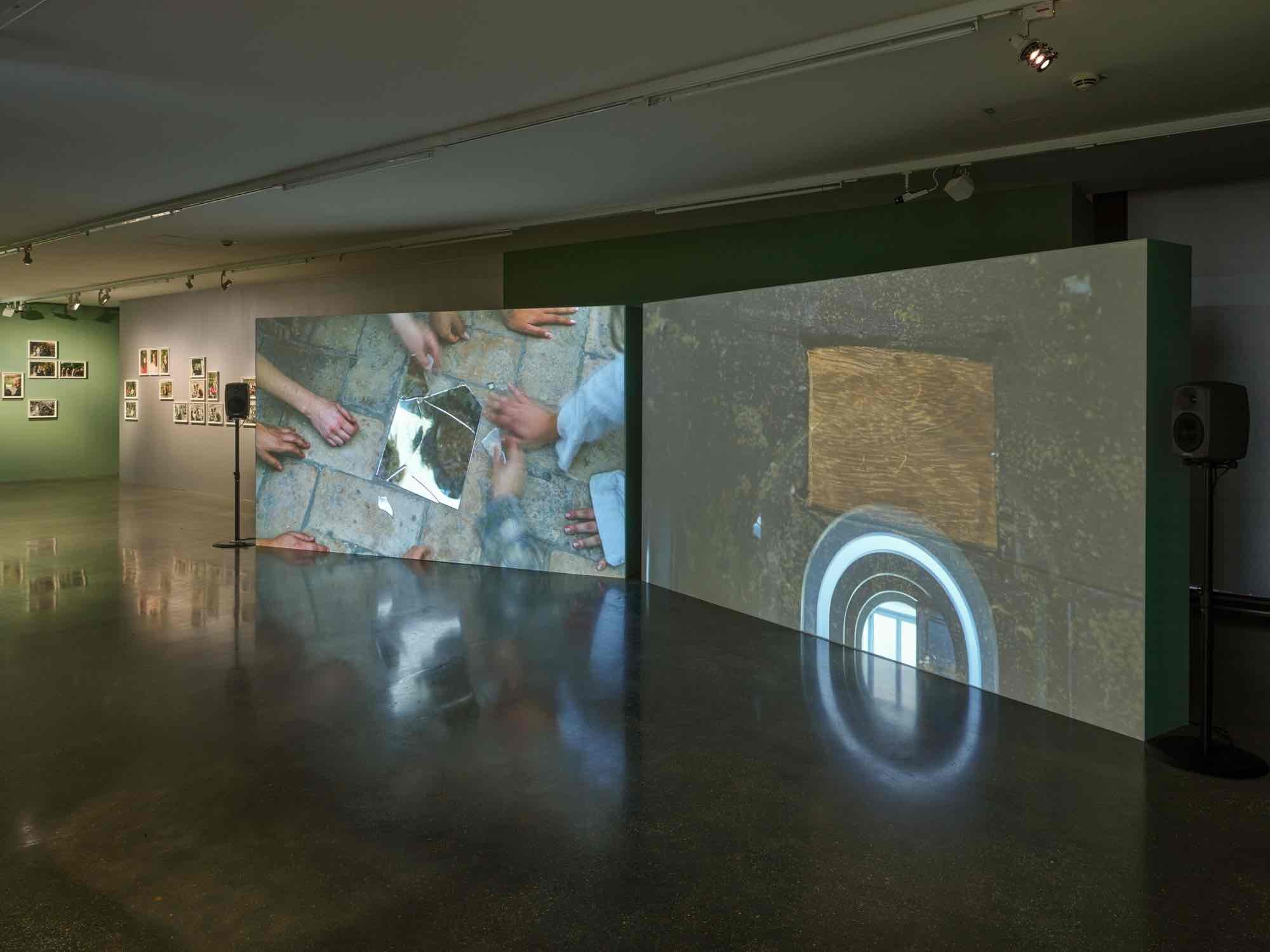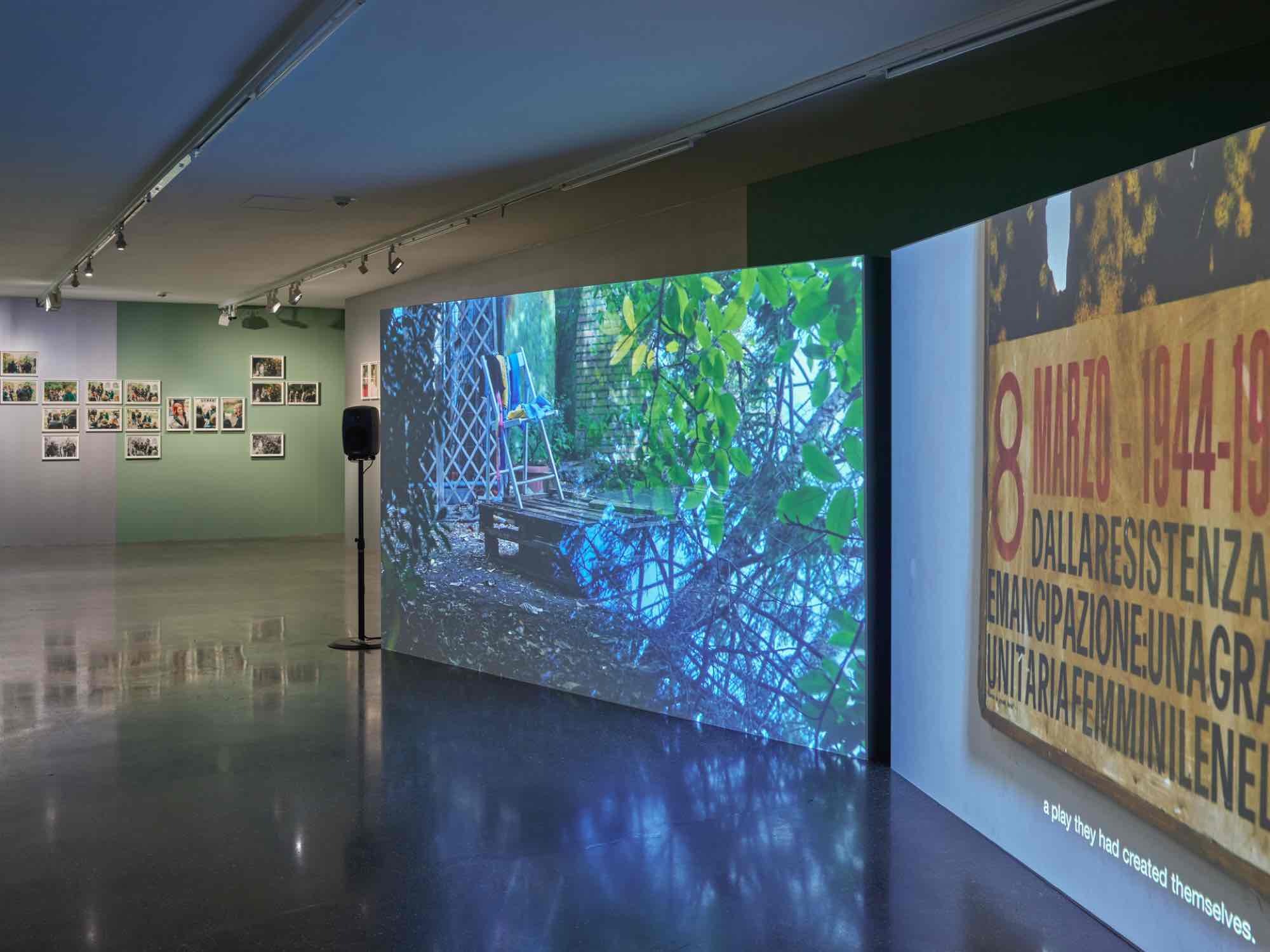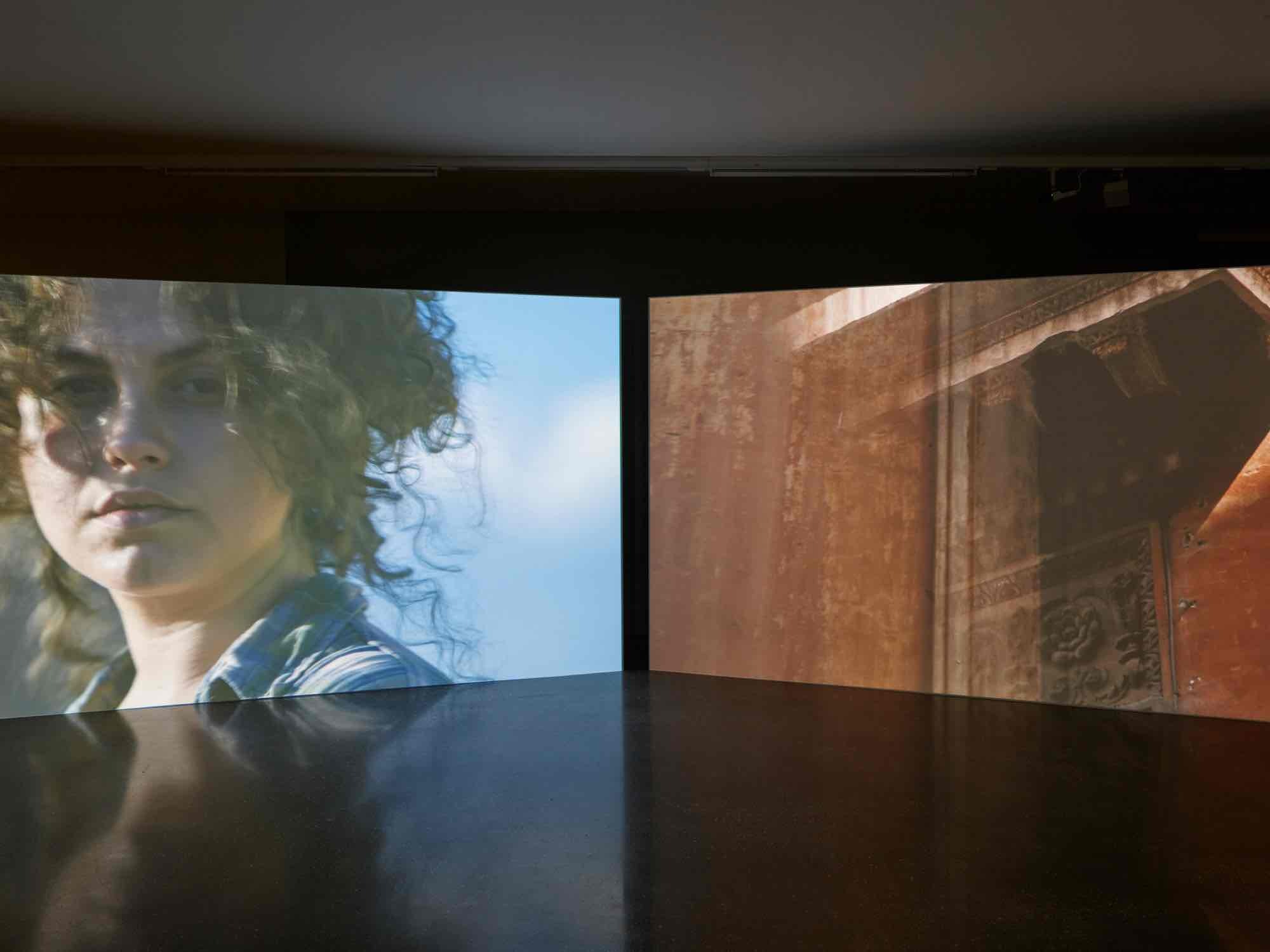Constanze Ruhm
Come una pupilla al Variare della luce
16 Mar - 27 Aug 2023

Exhibition view "Constanze Ruhm. Come una pupilla al Variare della luce"
Photo: Johannes Stoll / Belvedere, Vienna
Photo: Johannes Stoll / Belvedere, Vienna

Exhibition view "Constanze Ruhm. Come una pupilla al Variare della luce"
Photo: Johannes Stoll / Belvedere, Vienna
Photo: Johannes Stoll / Belvedere, Vienna

Exhibition view "Constanze Ruhm. Come una pupilla al Variare della luce"
Photo: Johannes Stoll / Belvedere, Vienna
Photo: Johannes Stoll / Belvedere, Vienna

Exhibition view "Constanze Ruhm. Come una pupilla al Variare della luce"
Photo: Johannes Stoll / Belvedere, Vienna
Photo: Johannes Stoll / Belvedere, Vienna
Curated by Claudia Slanar.
Constanze Ruhm’s exhibition at the Belvedere 21 seeks to shatter patriarchal regimes of the gaze and pictorial representation and explores an alternative kind of images and narratives that she unearths in women’s collaborative creative ventures.
Stella Rollig, General Director, Belvedere: Constanze Ruhm’s new exhibition exemplifies her quest for traces of a feminist subjectivity and a different way of seeing. In her multifaceted films and installations, she consistently adopts women’s perspectives in order to counter the “male gaze.”
Since the early 1990s, Ruhm has harnessed a variety of media in an effort to rewrite filmic narratives from a feminist standpoint. The internationally recognized artist has long been especially interested in the history of Italian feminism and the so-called “Précieuses,” proto-feminist pioneers of salon culture who were a focus of the Italian feminist Carla Lonzi’s work. Lonzi’s vision of a fractured or fragmented temporality that opens the door to a different kind of images, films, and, ultimately, consciousness make her a guiding figure in Ruhm’s exhibition. She is also the source of the titular quote “come una pupilla al variare della luce” (like a pupil in the changing of light).
The broken mirror serves in Ruhm’s exhibition as a figure and visual metaphor in a summoning of the specters of feminist history. It stands for a whole number of things: the demolition of an ideal of beauty that finds expression in the mirror image and its incessant scrutiny; the fragmentation of a linear temporality; the painful and violent shattering of a female self-image, which goes hand in hand with the search for a new constellation that remains to be found and will always be open and fragmentary. Not least importantly, this mirror travels through time (“uno specchio che viaggia nel tempo”): images from the cinema appear in it, from photography, from the history of painting.
Newly conceived video installations, a photographic series, an arrangement of archival materials, and a presentation of works by other feminist artists from the early years of the Italian women’s movement in the 1970s—among them Suzanne Santoro and Maria Grazia Chinese—let us read a feminist history of art and film in the mirror of a contemporary creative practice. Constanze Ruhm inquires into which threads connecting the present to historic junctures and figures of the feminist movements bear revisiting and may be projected into the future. As young feminists take the stage, so do all their forebears, women who began gathering, having political debates, and organizing hundreds of years ago. The boundaries between past and present are left blurry along the edges of the mirror shards, as are the relationships and linkages across the generations.
As the show’s central motif, the mirror theme also structures the exhibition architecture and the visual design, in which the colors green and silver predominate. The mirror, in Ruhm’s work, is capable of tying different places and times—not least among them the real and the imaginary—together. Yet it is more than an optical instrument uniting past and present. The mirror shards also catch the sunlight and send light signals of their own—into the future. Having shattered the patriarchal regime of the gaze and pictorial representation, Ruhm’s art employs performative rituals, theatrical invocations, and polysemous signals to compose the fragments into another body as a contribution to a feminist historiography.
Claudia Slanar, curator of the exhibition: Constanze Ruhm builds her exhibition out of broken pieces, mirror shards—the many singular, individual, yet shared histories of women—which we contemporaries can take up and assemble in a new history of our own.
Constanze Ruhm’s exhibition at the Belvedere 21 seeks to shatter patriarchal regimes of the gaze and pictorial representation and explores an alternative kind of images and narratives that she unearths in women’s collaborative creative ventures.
Stella Rollig, General Director, Belvedere: Constanze Ruhm’s new exhibition exemplifies her quest for traces of a feminist subjectivity and a different way of seeing. In her multifaceted films and installations, she consistently adopts women’s perspectives in order to counter the “male gaze.”
Since the early 1990s, Ruhm has harnessed a variety of media in an effort to rewrite filmic narratives from a feminist standpoint. The internationally recognized artist has long been especially interested in the history of Italian feminism and the so-called “Précieuses,” proto-feminist pioneers of salon culture who were a focus of the Italian feminist Carla Lonzi’s work. Lonzi’s vision of a fractured or fragmented temporality that opens the door to a different kind of images, films, and, ultimately, consciousness make her a guiding figure in Ruhm’s exhibition. She is also the source of the titular quote “come una pupilla al variare della luce” (like a pupil in the changing of light).
The broken mirror serves in Ruhm’s exhibition as a figure and visual metaphor in a summoning of the specters of feminist history. It stands for a whole number of things: the demolition of an ideal of beauty that finds expression in the mirror image and its incessant scrutiny; the fragmentation of a linear temporality; the painful and violent shattering of a female self-image, which goes hand in hand with the search for a new constellation that remains to be found and will always be open and fragmentary. Not least importantly, this mirror travels through time (“uno specchio che viaggia nel tempo”): images from the cinema appear in it, from photography, from the history of painting.
Newly conceived video installations, a photographic series, an arrangement of archival materials, and a presentation of works by other feminist artists from the early years of the Italian women’s movement in the 1970s—among them Suzanne Santoro and Maria Grazia Chinese—let us read a feminist history of art and film in the mirror of a contemporary creative practice. Constanze Ruhm inquires into which threads connecting the present to historic junctures and figures of the feminist movements bear revisiting and may be projected into the future. As young feminists take the stage, so do all their forebears, women who began gathering, having political debates, and organizing hundreds of years ago. The boundaries between past and present are left blurry along the edges of the mirror shards, as are the relationships and linkages across the generations.
As the show’s central motif, the mirror theme also structures the exhibition architecture and the visual design, in which the colors green and silver predominate. The mirror, in Ruhm’s work, is capable of tying different places and times—not least among them the real and the imaginary—together. Yet it is more than an optical instrument uniting past and present. The mirror shards also catch the sunlight and send light signals of their own—into the future. Having shattered the patriarchal regime of the gaze and pictorial representation, Ruhm’s art employs performative rituals, theatrical invocations, and polysemous signals to compose the fragments into another body as a contribution to a feminist historiography.
Claudia Slanar, curator of the exhibition: Constanze Ruhm builds her exhibition out of broken pieces, mirror shards—the many singular, individual, yet shared histories of women—which we contemporaries can take up and assemble in a new history of our own.
